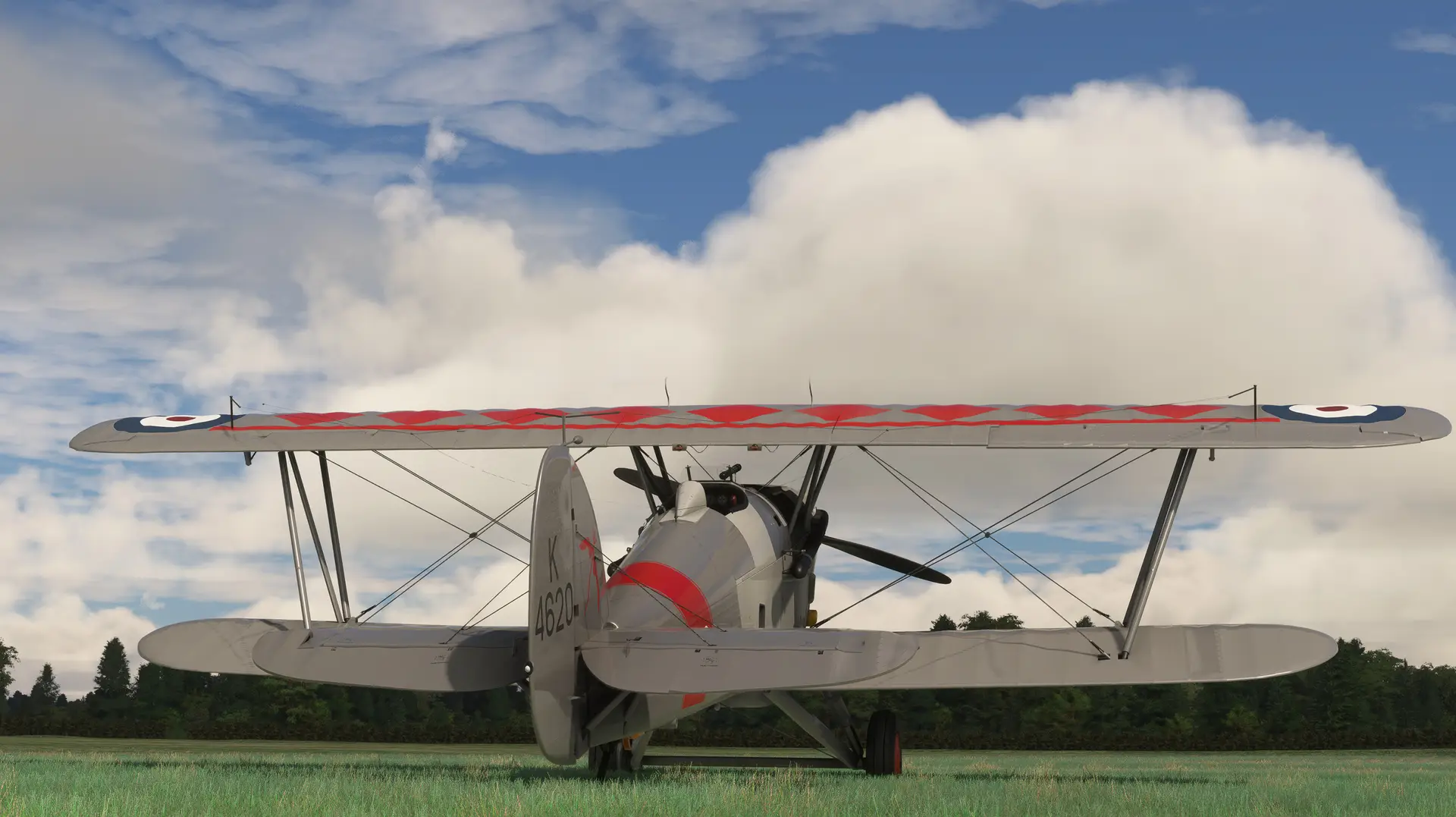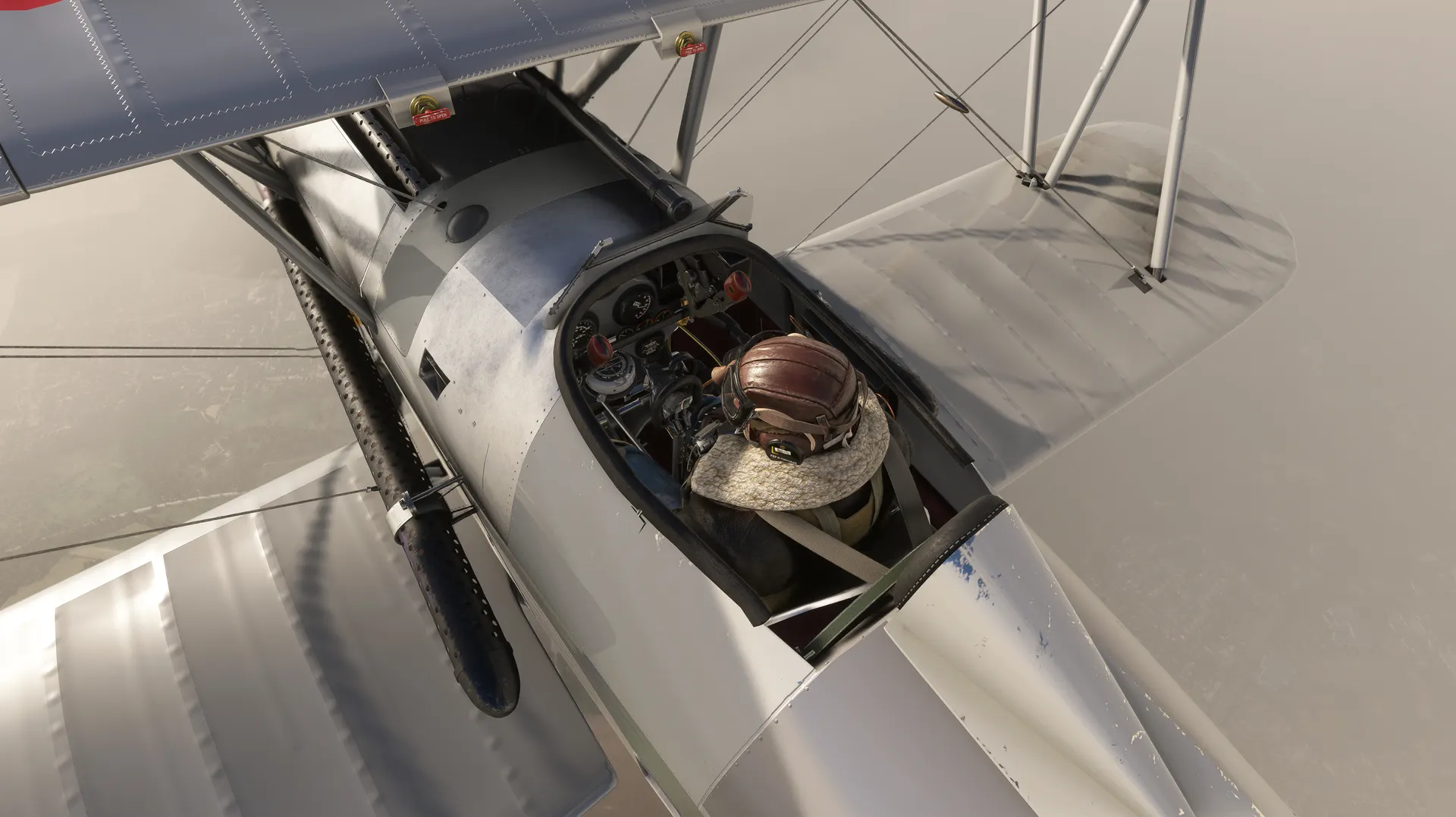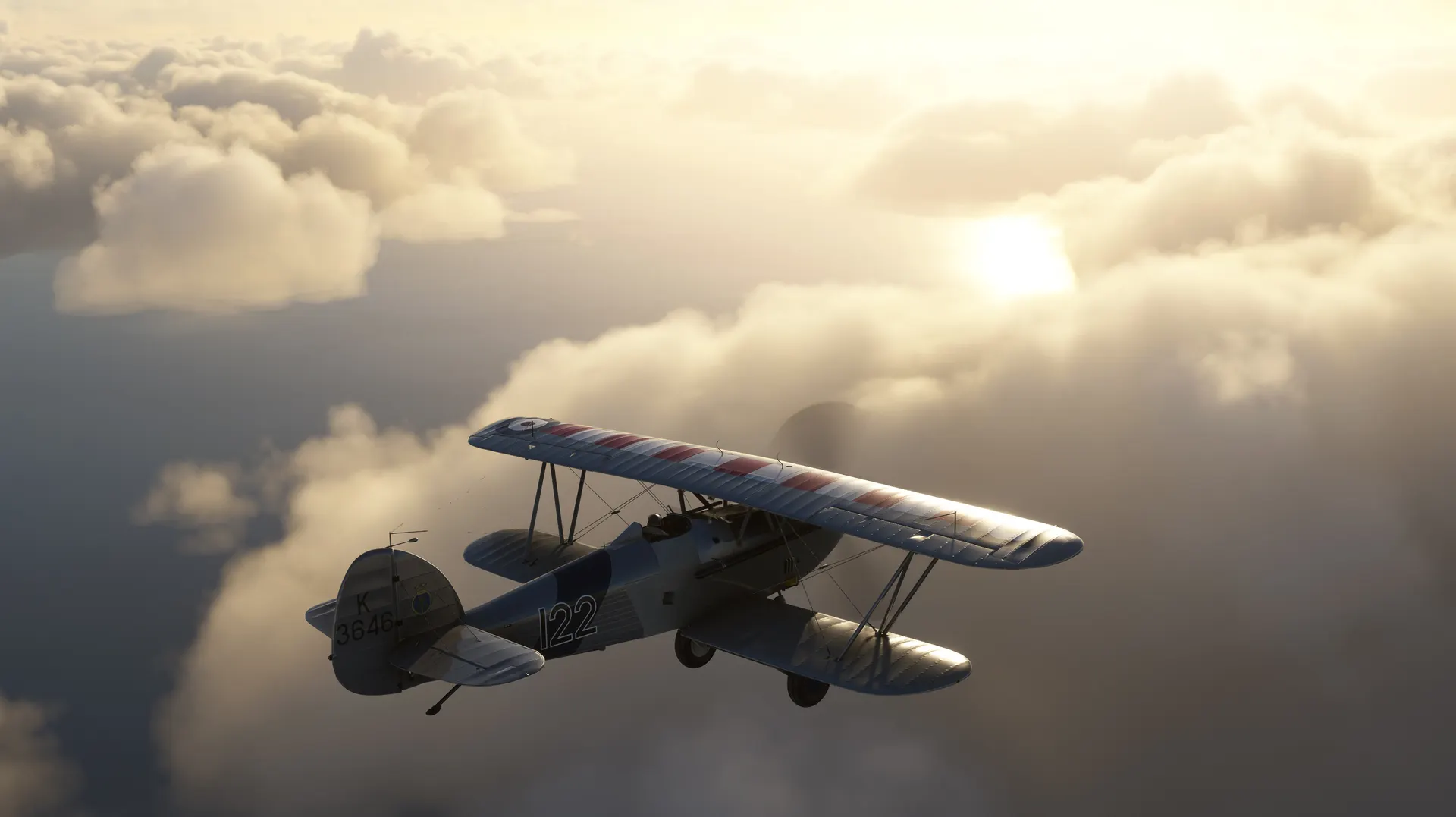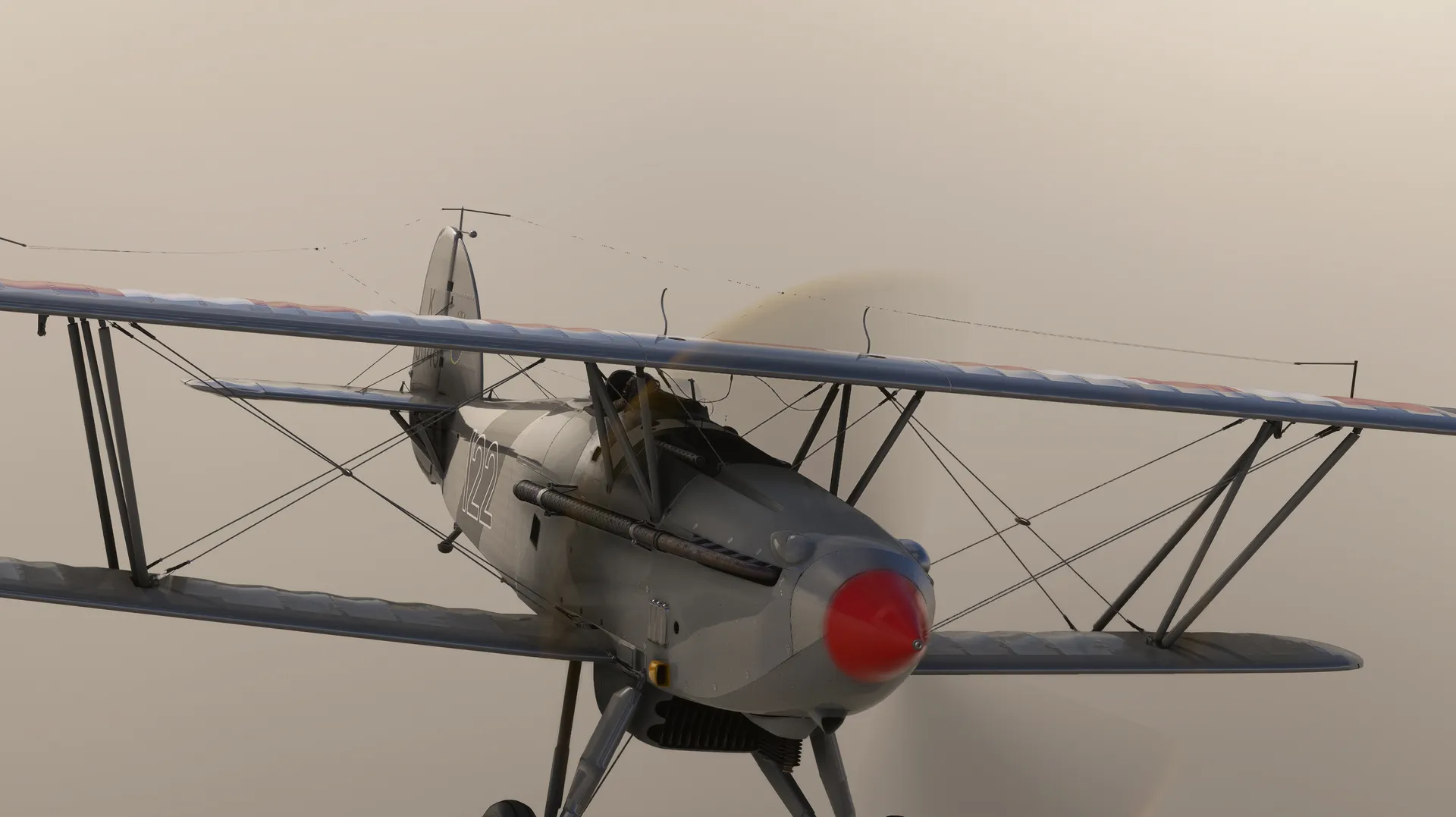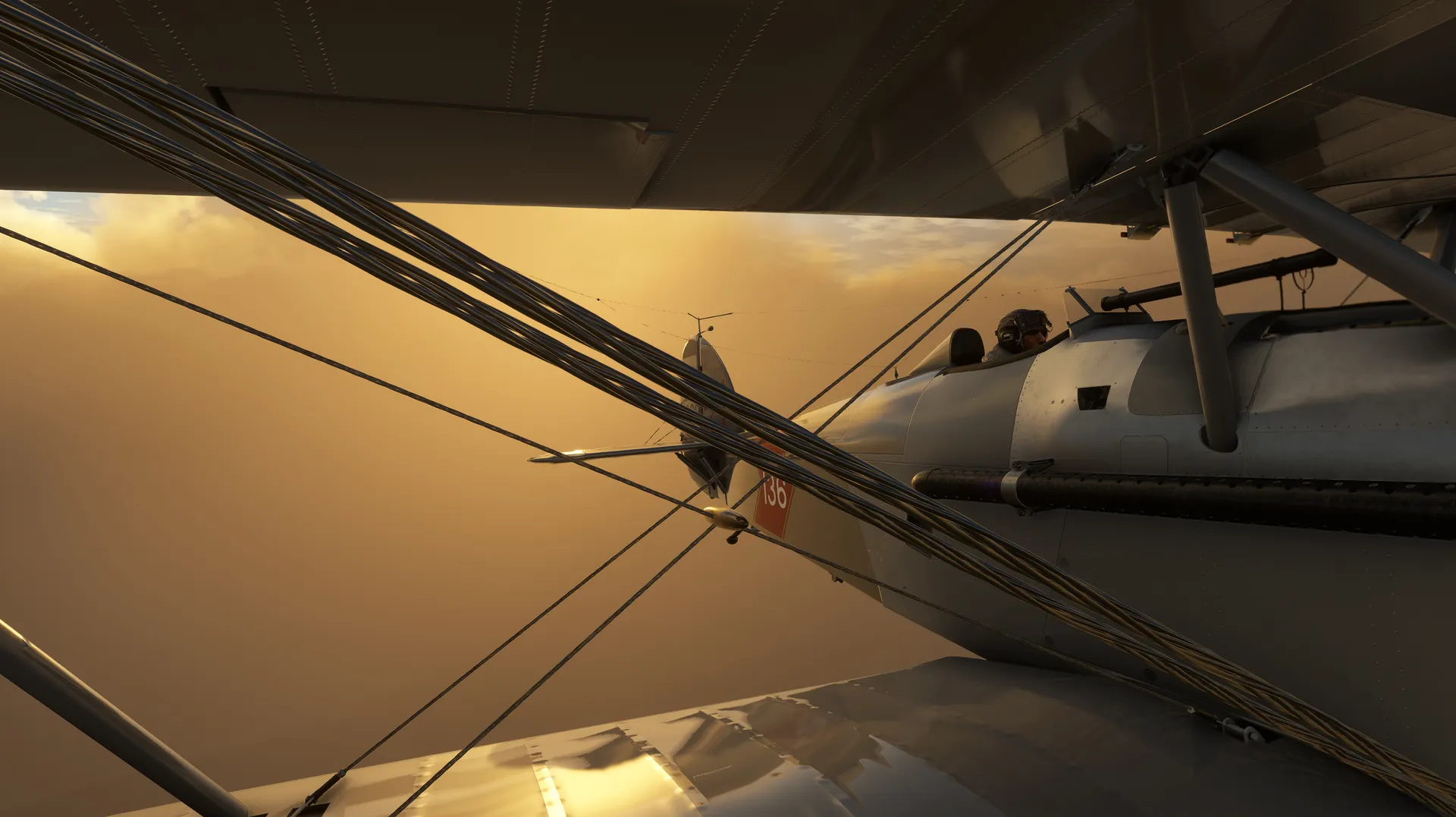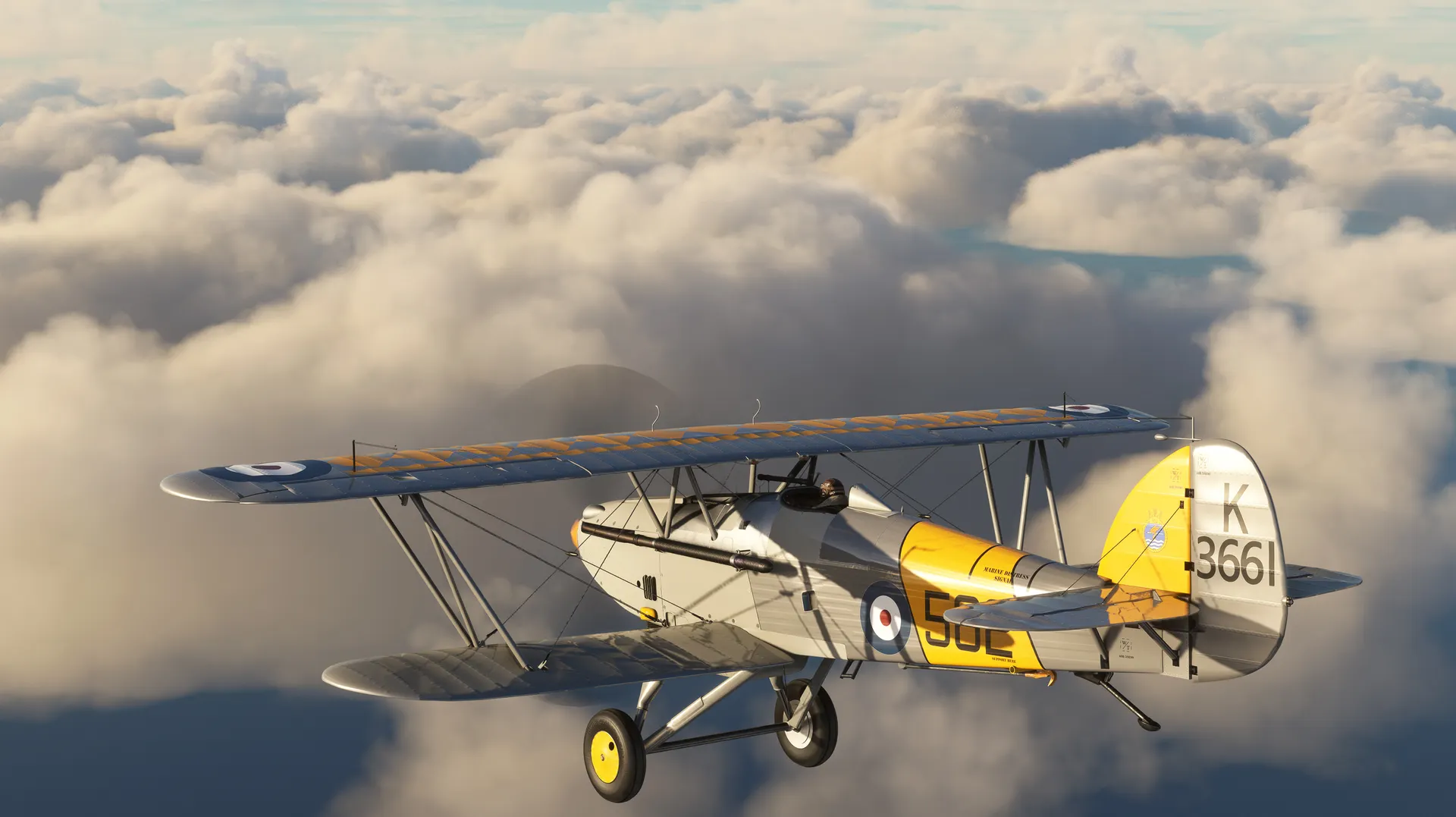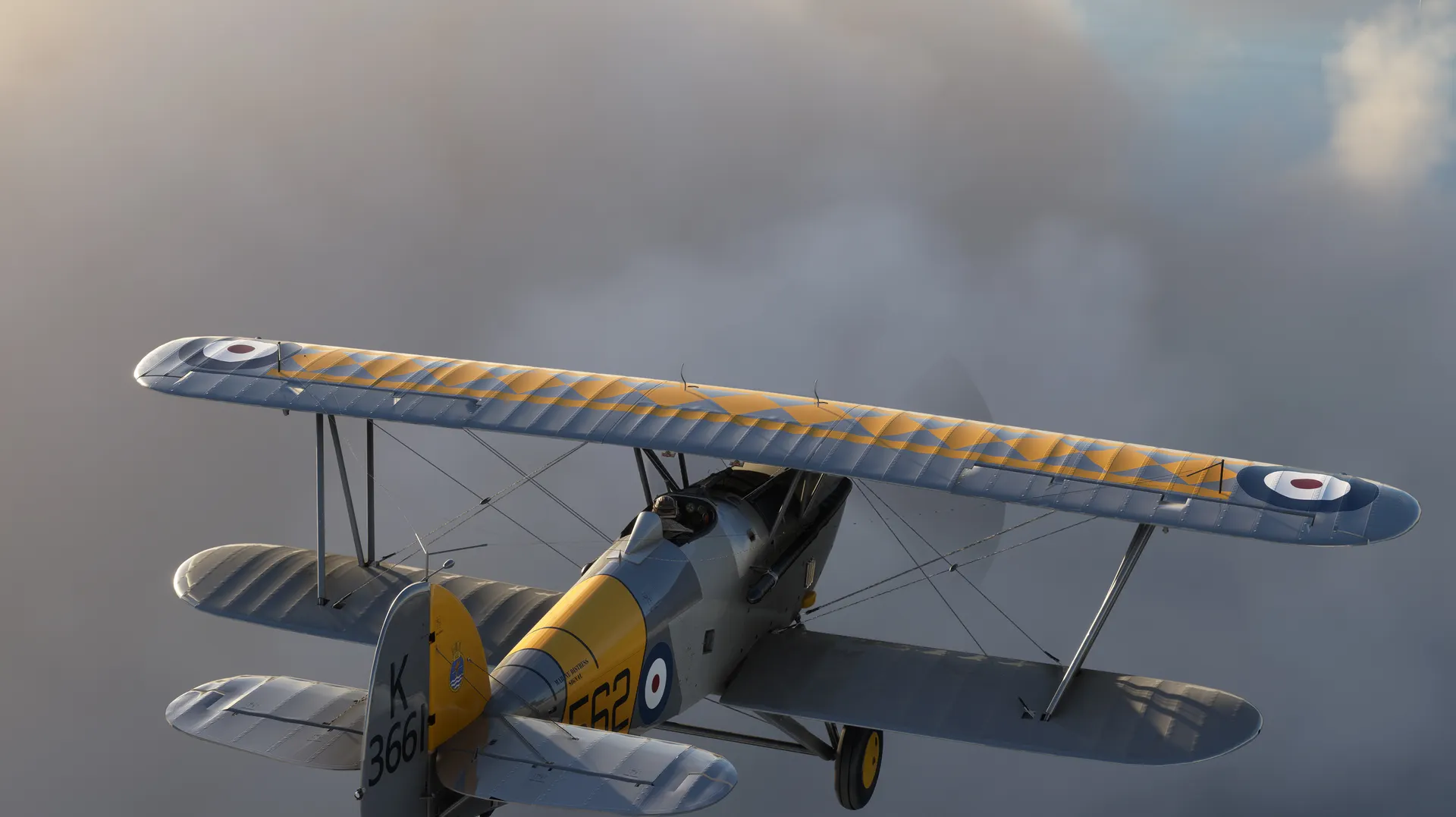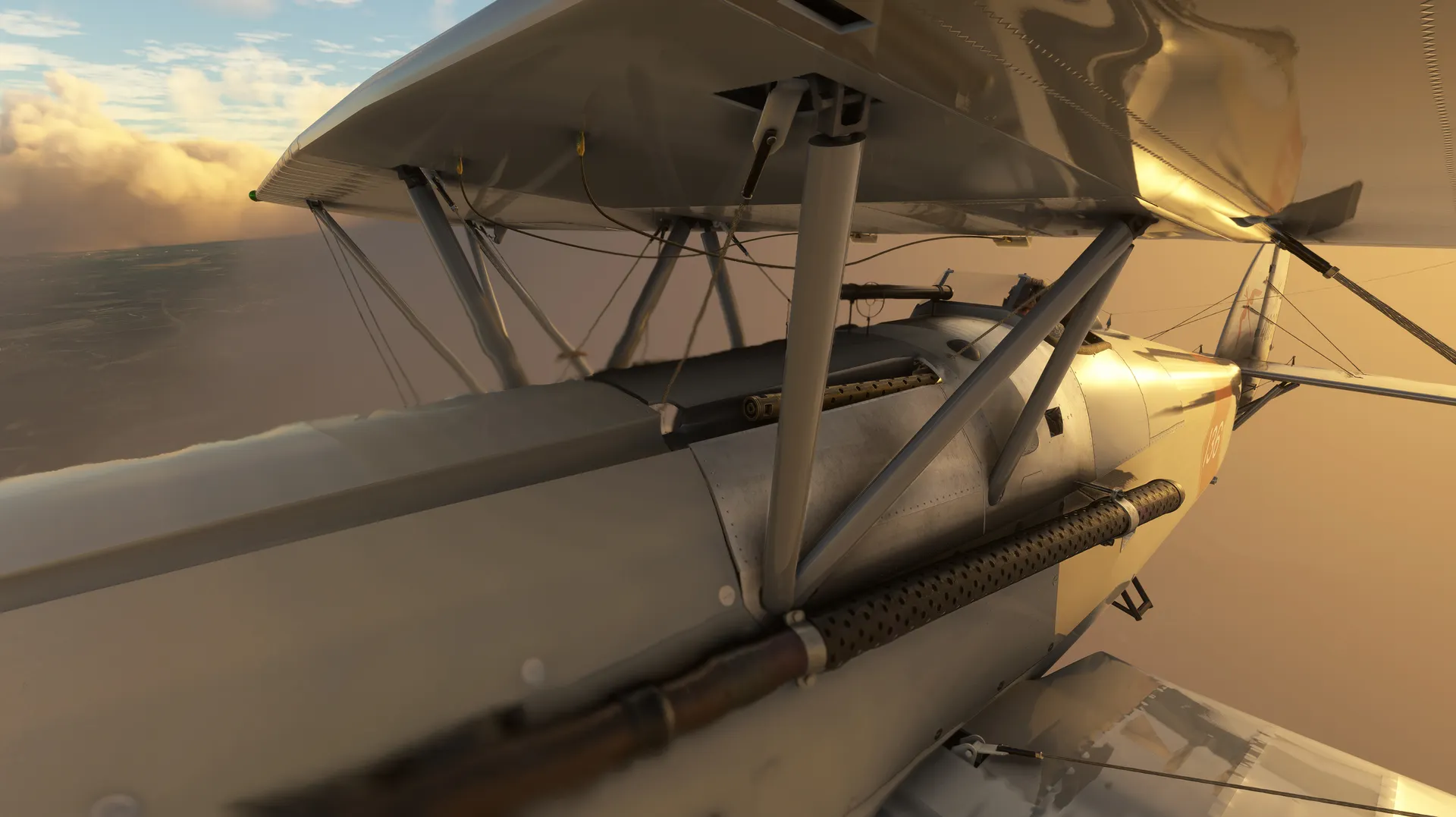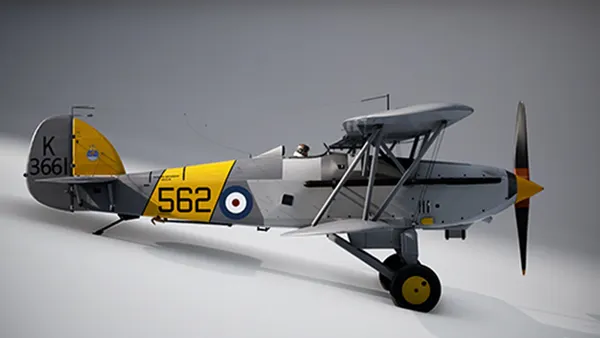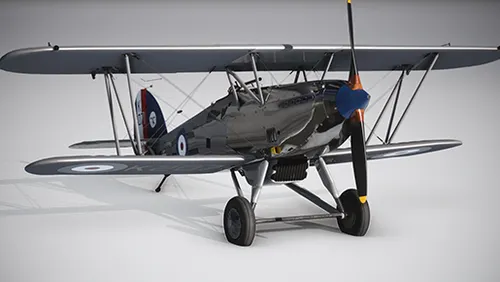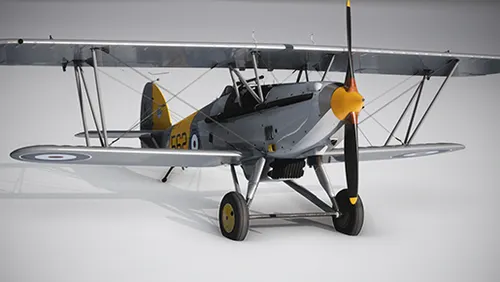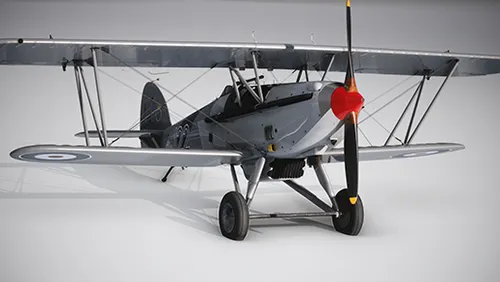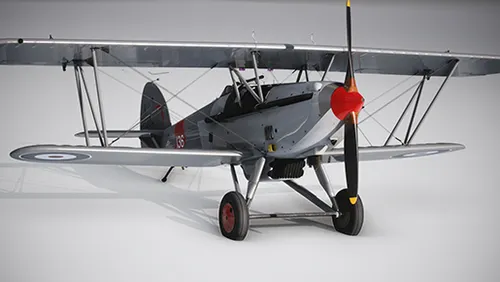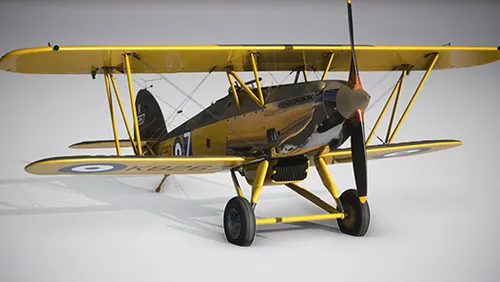- USD 24.49
- View more offers at FS Addon Compare
- Added: February 13, 2025
- Updated: April 10, 2025
The Hawker Nimrod and Fury were designed by Sydney Camm who was later to design the Hawker Hurricane and many more famous fighting machines.
The entire airframe was light and strong, the fuselage being mostly a stressed-metal skin over a light tubular frame. The aft fuselage section, wings and tail surfaces were doped fabric over tubular frames.
This well-tried build technique remained a popular choice for Camm's designs including the famous Hawker Hurricane, to come.
The airframe was powered by a Rolls Royce Kestrel V12 engine first producing 480 hp but later upgraded to 608hp.The propeller was a fixed-pitch wooden Watts-type.
First flown in early 1931, the Hawker Fury, with the later 608hp Kestrel, was the first RAF interceptor capable of speeds in excess of 200 mph. It was also a nimble flyer and an excellent aerobat. With a climb rate of 2,400 ft per minute, the aeroplane was designed for a multiple of roles including the interception of bombers of the day.
Not to be outdone, the Royal Navy also wanted this new single-seat fighter for ship-borne duties. So the Fury design was modified to have a broader wingspan and navalised with the addition of arrestor hook, catapult equipment and a headrest for the pilot's comfort and safety during catapult launches.
Both types initially had straight, constant-chord wings, with the lower wing significantly cranked aft of the upper.
The Royal Navy's Nimrods were later given swept-back wings and designated Nimrod MkII.
For armament both aircraft were equipped with two forward-firing Vickers machine guns, firing through the propeller and could carry a small bomb-load beneath each wing.
The Hawker Fury first flew on the 25th March 1931 and entered service with the RAF in May of that year.
The Hawker Nimrod (Mk1) first flew (as a carrier-based aircraft) on 31st October 1931 and the first of the Mk2 Nimrods were delivered to the Royal Navy in March 1933.
Eventually outpaced and out-maneuvred by more "modern" machinery of the times, by 1939 the Nimrod and Fury had all but disappeared from front-line duties.
However, a monoplane version of the design was penned by Camm during the early 30's and when the first of the Merlin family of Rolls Royce engines started to appear, the design was further revised around the new engine, to become the prototype Hawker Hurricane.
